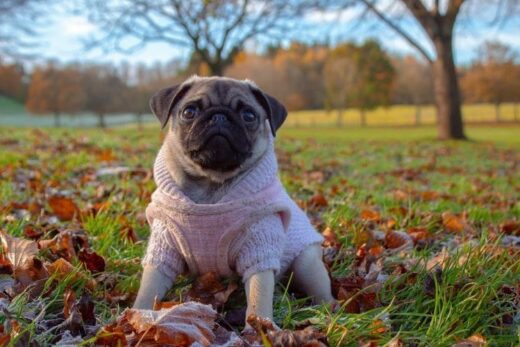What Is A Service Dog?
Service dogs are dogs that are trained to perform specific tasks for people with physical and mental disabilities and ailments. This includes mental health issues as well. While service dogs are every bit as cute and cuddly as any other dog, they have a specific job to perform and are not considered pets.
An example of a service dog that most of us are familiar with is guide dogs for the blind – also known as seeing-eye dogs. These dogs are trained to lead a blind person to where they want to go while also protecting them from hazards, like roads, steps, and other people.
Service dogs are different from other dogs with jobs (like police or cattle dogs) in that their job is to help a specific person with a disability, while other dogs simply fill in a job position. Dogs are the only kind of domesticated animal that can legally qualify as a service animal.
How Are Service Dogs Trained?
Training a service dog is a long and painstaking process, as they need to be able to perform their roles and remain professional at all times. Most service dogs are bred and sold to owners for the sole purpose of becoming service dogs. It is possible to train someone’s pet to be a service dog, but only if they show an initial capacity for being highly trainable.
Some of the basic tasks that a service dog might do include:
- Answering the door for someone who can’t check it themselves
- Bringing items to their owner
- Barks to alert their owner of danger, or to alert others that their owner is in danger
- Helping their owner maintain their balance
- Carries medication in a wearable pack for their owner
Most medium and large breed dogs can be service dogs, though Golden and Labrador retrievers are the most common service dog breeds.
Who Should Use A Service Dog?
If you feel like you might be able to benefit from a service dog, speak to your doctor or therapist about the possibilities of owning one, what you would use a service dog for, and the problems you would try to solve by owning a service dog. Anyone who’s life is seriously restricted or affected by a disability/mental illness could likely find a use for a service dog. Just remember that service dogs aren’t a miracle cure and can’t help with every condition.
Anyone can technically own a service dog, but whether or not the dog is classified as a working service dog or is assigned to a person is another story. Simply owning a service dog doesn’t necessarily make your dog a working service dog, and many service dog trainers won’t work with individuals who don’t meet certain qualifications. This is why it’s important to speak with your therapist or doctor about your options.
How Service Dogs Can Help With Anxiety and Depression
While service dogs have traditionally performed tasks for physical disabilities, service dogs trained to help people with anxiety and depression are becoming more commonplace. One of the major issues that people with anxiety and/or depression face is self-imposed isolation.
Individuals with severe anxiety and depression isolate themselves for a variety of reasons, though most commonly it stems from a fear of the outside world, other people, and the stress those things can create.
Service dogs help break that isolation and fear in a variety of ways:
Unconditional love
This gives people who might feel undeserving of love and attention a constant source of it and provides people who are too anxiety-ridden to seek out these things from other people. As anyone who’s ever owned a dog knows, one of the best things about being a pet-parent is that dogs show their owners, unconditional love. Dogs don’t judge their owners, place expectations on them, or have any requirements for showing affection.
For people struggling with mental illnesses, simple things like changing clothes or getting out of bed can be a major ordeal. Having a service dog there during these daily routines can help people feel less alone and more confident.
New responsibilities
Another challenge that people with depression and/or anxiety face is keeping up with their daily chores, errands, and duties. People with these mental illnesses struggle with simple things like getting to work on time, keeping up their laundry, maintaining their finances, and so on.
A service dog adds to that list of chores – they need to be fed, walked, bathed, loved, and cared for. Unlike their laundry or checking their bank account, performing the chores of dog-ownership aren’t optional. A dog has to be fed and walked, and since they provide an obvious and immediate reward for their owner, there is more motivation for the owner to perform these chores.
This can help those with anxiety and depression in two big ways. First, it gives them a sense of purpose and duty. Their dog needs them, and that means they have to keep themselves together for their dog. And second, it can help that individual with finding the motivation and discipline to start completing other chores on a routine basis.
Recognize panic attacks
Panic attacks are when a person with anxiety enters fight or flight mode over a circumstance that does not require that level of adrenaline or stress. For example, something as simple as ordering food might push an anxious person into a heightened state of stress.
On top of being scary, distressing, and embarrassing, panic attacks can be very hard to recognize for the people around the struggling individual. For everyone else, nothing has changed, but for the person having a panic attack, the world has entered a state of immediate turmoil.
Even though people might have a hard time recognizing panic attacks, that doesn’t stop service dogs. Thanks to their heightened senses and training, they can detect panic attacks as soon as they start and begin working with their owner to minimize the effects of the attack – generally through soothing techniques.





